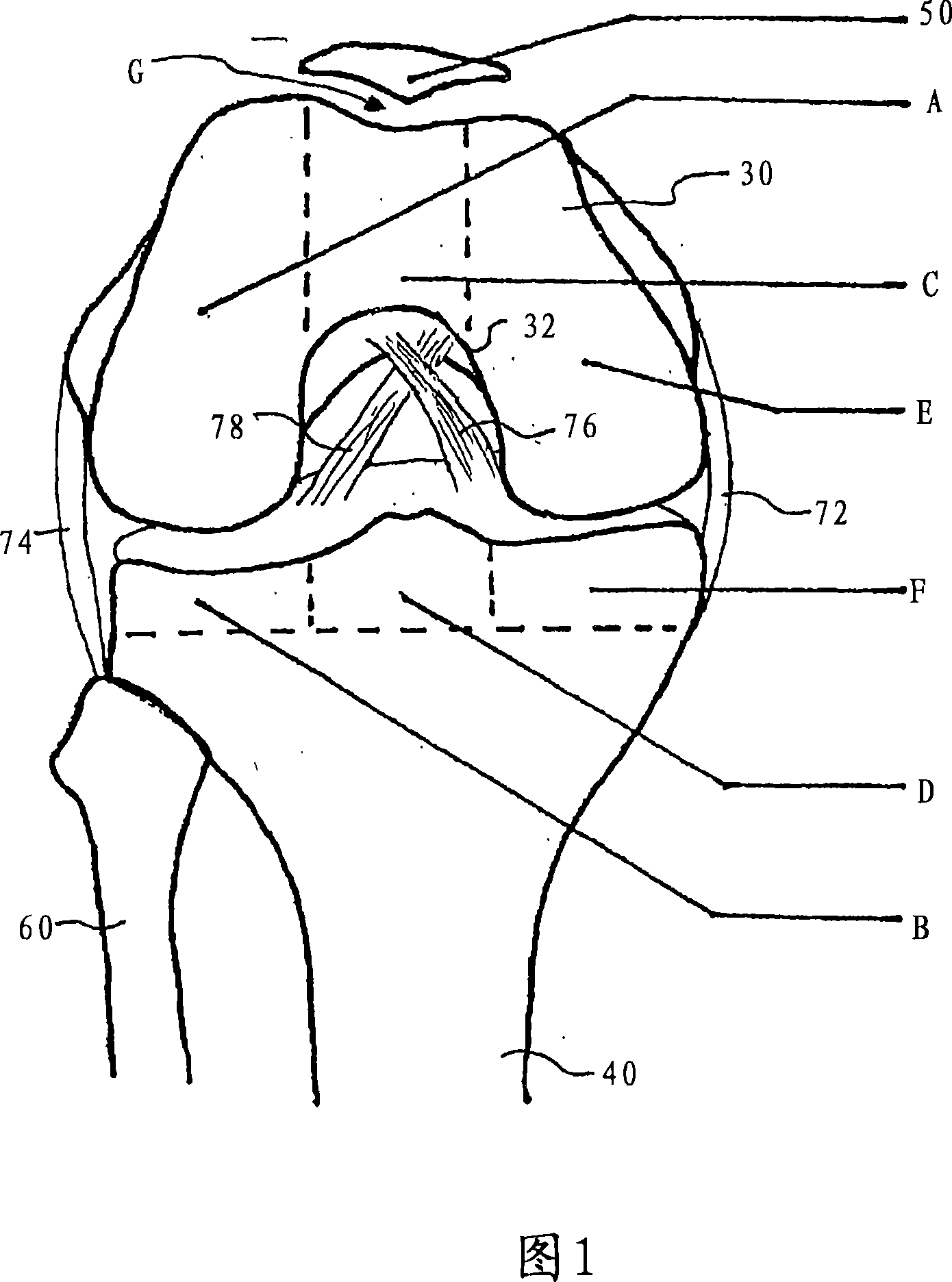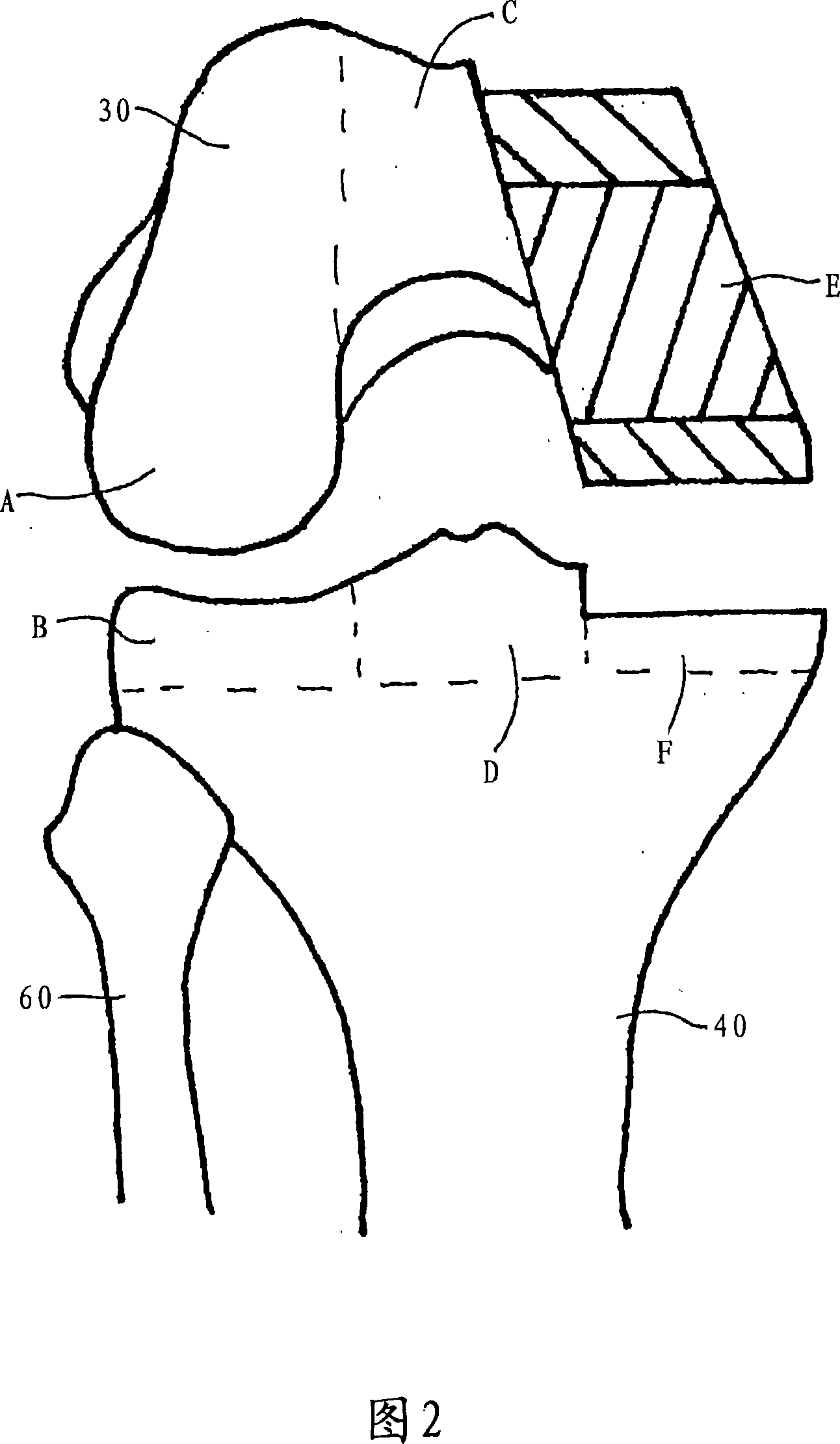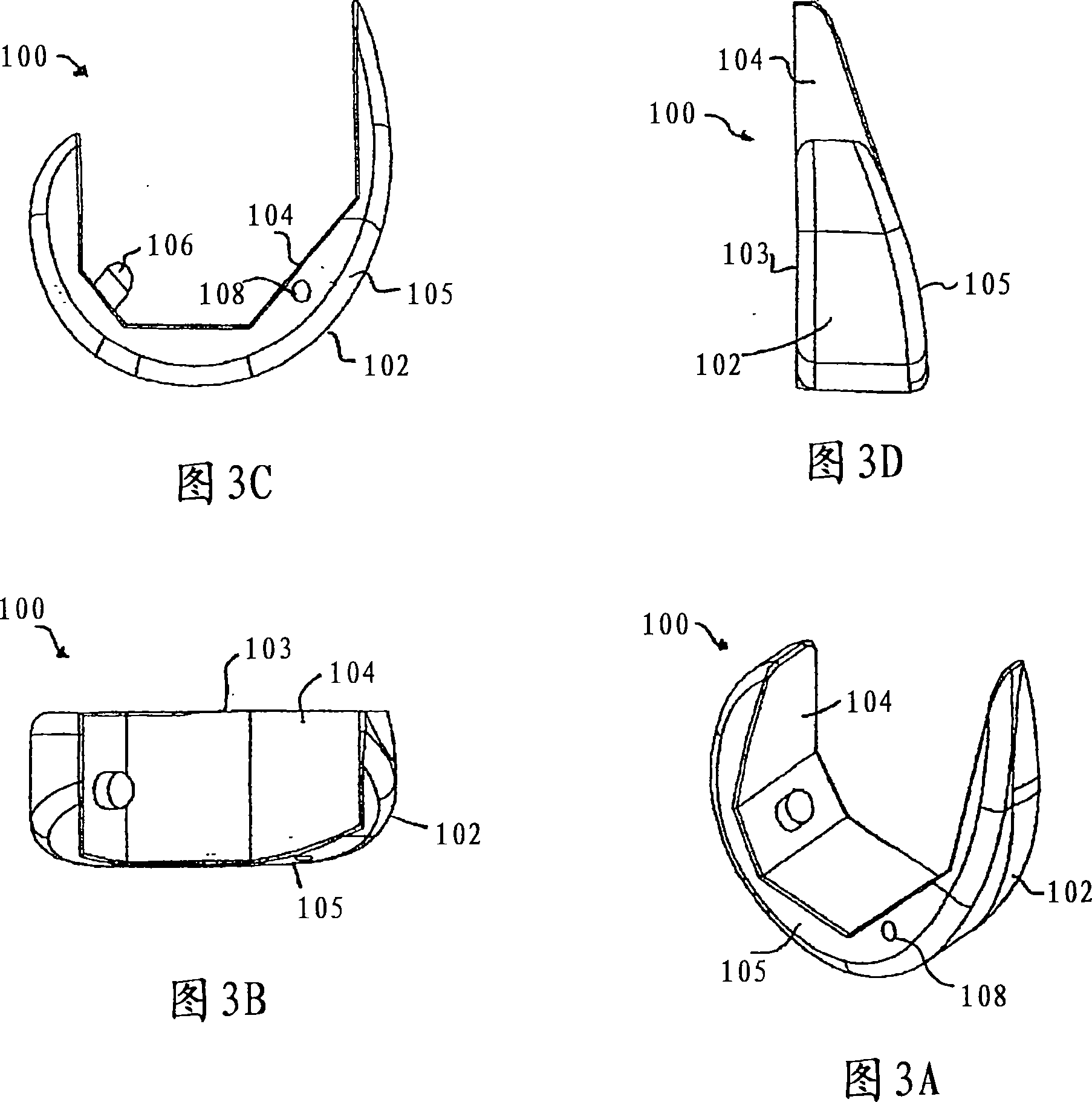Knee implant
A technology for implanting prostheses and components, applied in the field of knee joint transplantation, which can solve problems such as expensive, compromising surgical function results, and complexity
- Summary
- Abstract
- Description
- Claims
- Application Information
AI Technical Summary
Problems solved by technology
Method used
Image
Examples
Embodiment Construction
[0049] The preferred embodiments of the present invention are illustrated in the accompanying drawings. The same or similar reference numerals are used throughout the drawings to refer to the same or similar parts.
[0050] FIG. 1 is a diagram of a knee joint including the lower end of the femur 30, the upper end of the tibia 40, the fibula 60, and the patella 50. When the knee joint moves, the patella 50 moves relative to the femur 30 and tibia 40. The femur 30 is connected to the tibia 40 by the medial collateral ligament (MCL) 72, the posterior cruciate ligament (PCL) 78, and the anterior cruciate ligament (ACL) 76. The femur 30 is connected to the fibula 60 by the lateral collateral ligament (LCL) 74.
[0051] The lower end of the femur 30 is conceptually divided into a lateral (ie, outer) condyle area A, a middle area C (including the patellar groove 32 having an inverted U shape), and a medial (ie, inner) condyle area E. Similarly, the upper end of the tibia 40 is also conce...
PUM
 Login to View More
Login to View More Abstract
Description
Claims
Application Information
 Login to View More
Login to View More - R&D
- Intellectual Property
- Life Sciences
- Materials
- Tech Scout
- Unparalleled Data Quality
- Higher Quality Content
- 60% Fewer Hallucinations
Browse by: Latest US Patents, China's latest patents, Technical Efficacy Thesaurus, Application Domain, Technology Topic, Popular Technical Reports.
© 2025 PatSnap. All rights reserved.Legal|Privacy policy|Modern Slavery Act Transparency Statement|Sitemap|About US| Contact US: help@patsnap.com



